Observing the tongue is one of the important diagnostic methods in Traditional Chinese Medicine (TCM). TCM believes that the tongue is closely related to the five organ systems. By examining your tongue daily, you can gain a general understanding of your health status.
When observing: In a well-lit area, extend your tongue out in front of a mirror, ensuring the tongue is relaxed, the surface is flat, and the tip is slightly downward.
1.What does a healthy tongue look like?
In TCM, a normal tongue appearance can be summarized in six words: “light red tongue, thin white coating.” This indicates that the qi and blood in the body are harmonized, and the qi of the organs flows smoothly. By observing the color and shape of the tongue, we can roughly understand the rise and fall of qi and blood, as well as the presence of cold or heat in diseases.

2. Judging the body’s condition based on tongue color
Pathological tongue colors are generally divided into five types: light white, red, crimson, blue, and purple.
 Light white tongue indicates either deficiency or cold.
Light white tongue indicates either deficiency or cold.
The tongue color is lighter than normal, with more white and less red, indicating a light white tongue. If the red is extremely scarce or even absent, this suggests a severe condition, termed as a withered white tongue.
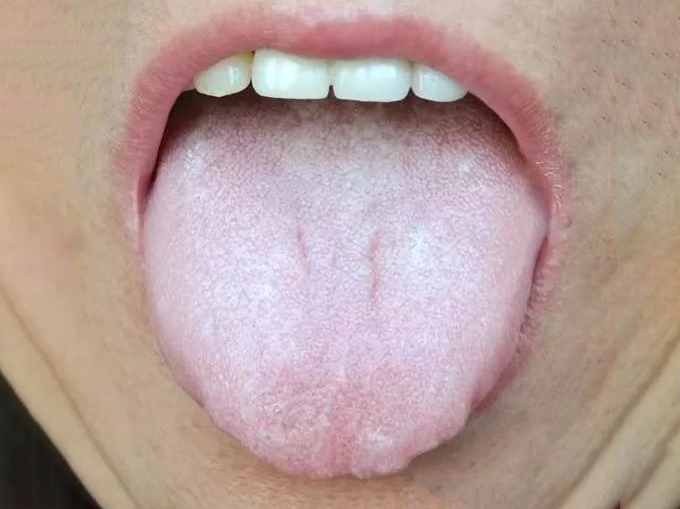
A light white tongue often indicates qi deficiency, blood deficiency, or both qi and blood deficiency, as well as deficiency cold. A reduction in blood supply to the tongue, or a decline in the biochemical function of blood, or qi deficiency failing to propel blood normally, can lead to insufficient qi and blood in the tongue, resulting in a light white color. If it is a withered white tongue, the condition is more severe, indicating a serious deficiency of essence and blood, and significant loss of qi and blood.How to determine if it is qi deficiency or blood deficiency with a light white tongue?If it is often accompanied by shortness of breath, fatigue, spontaneous sweating, and worsening symptoms after activity, it is more likely to be qi deficiency; if it is often accompanied by palpitations, insomnia, light menstrual flow, pale color, and pale lips and nails, it is more likely to be blood deficiency; if both types of symptoms are present, it indicates a deficiency of both qi and blood.Additionally, deficiency cold is also one of the causes of a light white tongue: insufficient yang qi leads to internal cold, and a reduction in blood supply to the tongue can also result in a light white color, but the tongue in deficiency cold is typically plump and tender, while the tongue in qi and blood deficiency is thin and frail. Red tongue indicates heat, distinguishing between deficiency and excess.
Red tongue indicates heat, distinguishing between deficiency and excess.
A deeper color than light red is deep red, referred to as a red tongue, which is one of the pathological tongue colors.
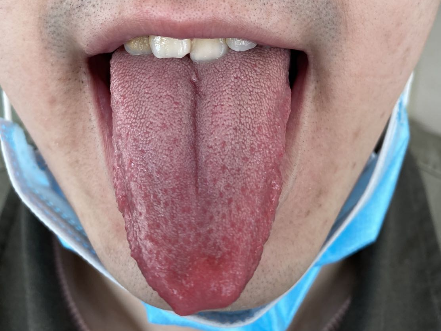
A red tongue generally indicates heat, but heat patterns can be classified into deficiency heat and excess heat. Generally, a deep red tongue with coating is often associated with excess heat, which is commonly accompanied by constipation, bad breath, flushed face, irritability, yellow tongue coating, and other symptoms; a red tongue with little or no coating or cracks, and a thin tongue body is often associated with deficiency heat, which is commonly accompanied by flushed cheeks, heat in the palms and soles, and night sweats.
 Crimson tongue indicates more severe heat than red tongue.
Crimson tongue indicates more severe heat than red tongue. A crimson tongue is darker than a red tongue, indicating a more severe condition than a red tongue. A crimson tongue often develops from a red tongue and usually indicates excessive internal heat or yin deficiency with excess fire. Generally, a tongue that is crimson with coating is often associated with excess heat, while a tongue that is without coating or has little coating is often associated with deficiency heat. Regardless of whether it is deficiency heat or excess heat, a crimson tongue indicates a more serious condition. If you notice your tongue turning crimson, seek medical attention promptly.
A crimson tongue is darker than a red tongue, indicating a more severe condition than a red tongue. A crimson tongue often develops from a red tongue and usually indicates excessive internal heat or yin deficiency with excess fire. Generally, a tongue that is crimson with coating is often associated with excess heat, while a tongue that is without coating or has little coating is often associated with deficiency heat. Regardless of whether it is deficiency heat or excess heat, a crimson tongue indicates a more serious condition. If you notice your tongue turning crimson, seek medical attention promptly. Blue-purple tongue often indicates internal stasis.
Blue-purple tongue often indicates internal stasis. A tongue that appears entirely blue or purple, or has localized blue-purple spots, is referred to as a blue-purple tongue.A purple tongue primarily indicates poor circulation of qi and blood, with internal stasis.If the entire tongue appears purple, it indicates significant stasis of blood, often associated with systemic blood stasis; if only localized spots are present, it indicates relatively mild stasis, often localized.
A tongue that appears entirely blue or purple, or has localized blue-purple spots, is referred to as a blue-purple tongue.A purple tongue primarily indicates poor circulation of qi and blood, with internal stasis.If the entire tongue appears purple, it indicates significant stasis of blood, often associated with systemic blood stasis; if only localized spots are present, it indicates relatively mild stasis, often localized.
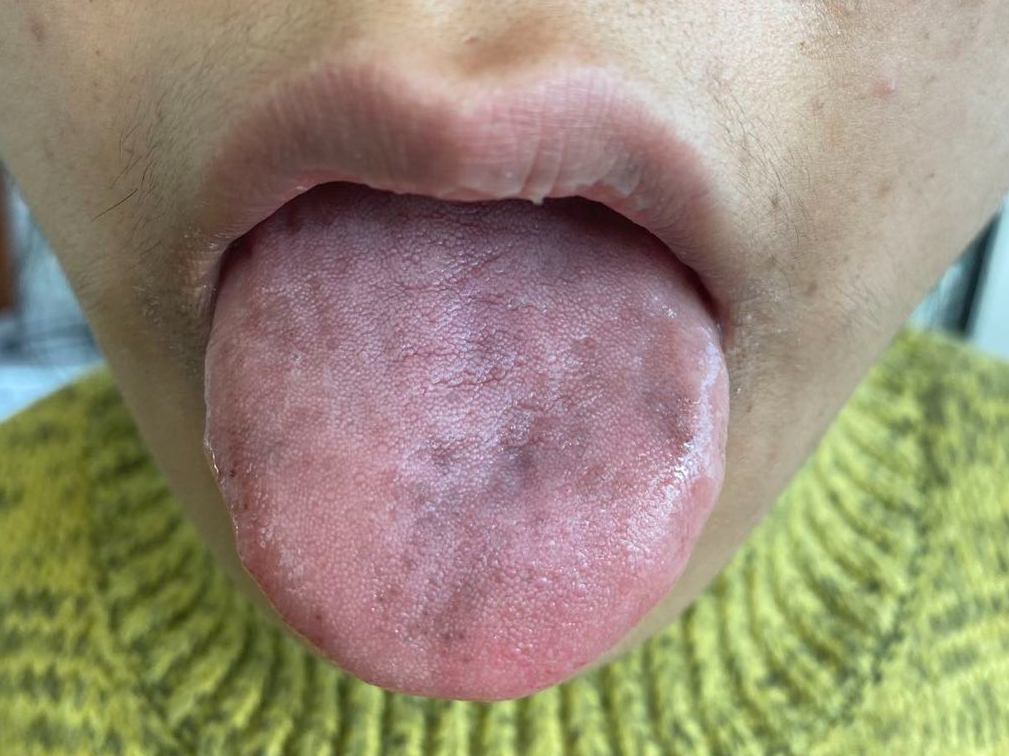
In such cases, you can drink some San Qi powder to invigorate blood and resolve stasis. Professor Fan Zhenglun states: Among all blood-invigorating herbs, only San Qi powder invigorates blood without breaking qi, and it is recommended to take 5g in the morning and evening. For more details, please refer to previous articles (San Qi is known as “gold that cannot be exchanged,” how much do you know about its value?).
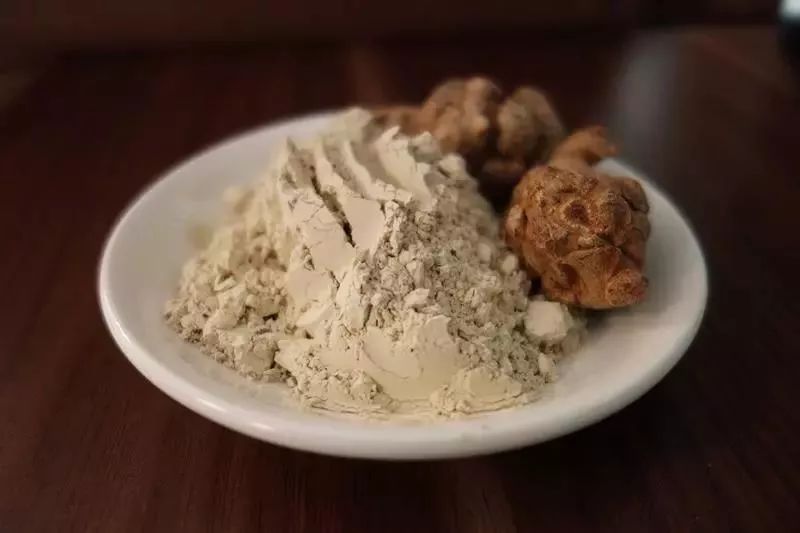
A blue tongue is a type of purple tongue, resembling “blue veins” exposed on the skin, lacking red color. A blue tongue primarily indicates excessive cold evil and qi and blood stasis, generally indicating a more severe condition. Some congenital heart diseases or food and drug poisoning can also present with a blue-purple tongue.
3. The tongue also has thickness
The normal tongue body should be of moderate thickness; if the tongue body is larger than normal, extending widely, it is referred to as a thick tongue; if the tongue body is smaller and thinner than normal, it is referred to as a thin tongue.
 01Thickness of the tongue
01Thickness of the tongue
A thick tongue often indicates phlegm and dampness. If there is insufficient yang qi in the body, the metabolism of water and fluids will be abnormal, leading to edema of the tongue tissue, resulting in a thick appearance. This is often accompanied by symptoms such as fatigue, dizziness, heaviness in the body, lower limb swelling, loose stools, and lack of appetite.
A thin tongue primarily indicates deficiency of both qi and blood or deficiency heat. It is often due to insufficient qi and blood yin, leading to malnourishment of the tongue body. If a thin tongue is also accompanied by a light white tongue color, it often indicates long-term deficiency of both qi and blood; if a thin tongue is accompanied by a red or crimson tongue, with little or no coating, it often indicates excess fire due to yin deficiency.
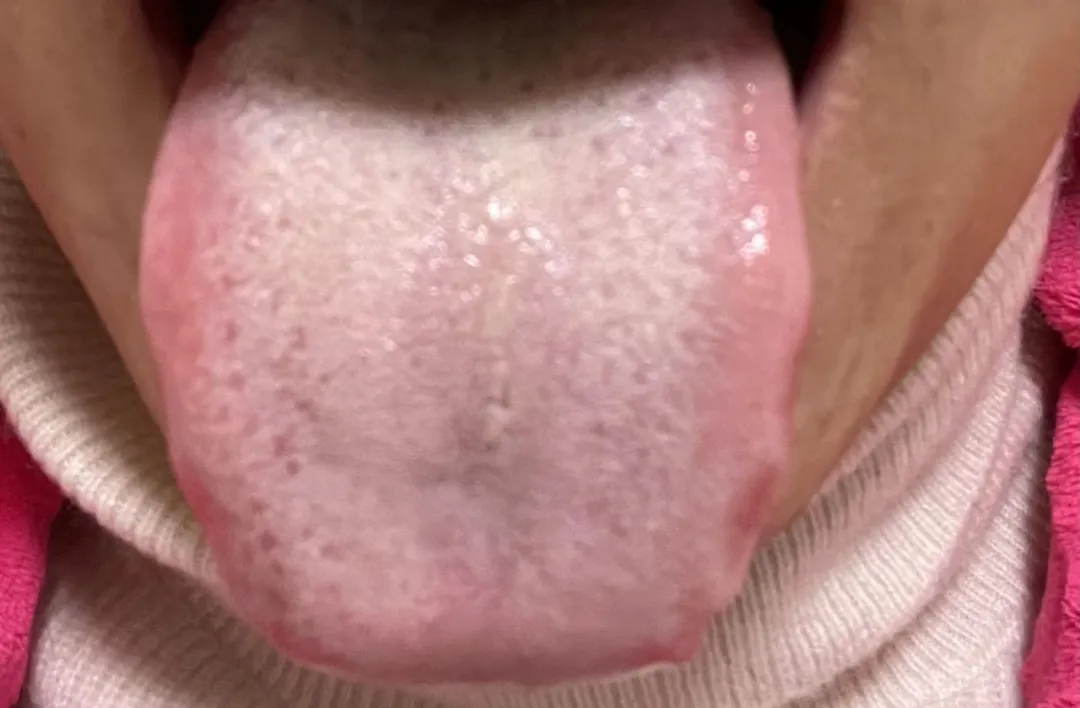
 02Teeth marks on the tongue often indicate spleen deficiency.
02Teeth marks on the tongue often indicate spleen deficiency.
The presence of teeth marks on the edges of the tongue is referred to as teeth-marked tongue, which primarily indicates spleen deficiency and excess dampness..
Teeth marks on the tongue indicate that the spleen is unable to transform and transport water and dampness, leading to swelling of the tongue, which causes friction between the teeth and the tongue surface, resulting in teeth marks. These marks generally persist for a long time, and patients need to use medicinal herbs to regulate their body for the marks to potentially disappear.
Dietary therapy can include Ba Zhen Cake, which is known as “the first cake of health preservation for a thousand years,”which cannourish the spleen and stomach, benefit qi, and strengthen the center. It is indicated for spleen and stomach deficiency, indigestion, reduced appetite, pale complexion, fatigue, abdominal distension, and loose stools.
Ping Xintang gathers renowned TCM experts from across the country, including Master Chen Tongyun, Chai Songyan, Xue Boshou, famous physician Chen Baogui, capital TCM masters Feng Jianchun, Wang Xiaolian, and well-known experts such as Li Junlong, Li Zhizhong, Fan Zhenglun, Ha Gang, Xiao Xiangru, Guan Qingwei, Wang Lei, Liu Xinqiao, Kong Lingyan, Ding Zhaoliang, etc. For over twenty years, Ping Xintang has insisted on using genuine medicine, good medicine, authentic medicinal materials, and original ecological medicinal materials. We are here to protect your first line of health defense!

